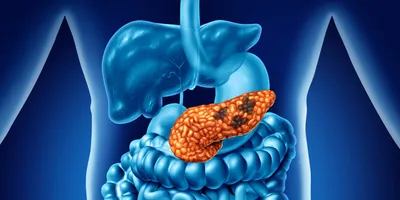Pancreatic cancer, particularly pancreatic ductal adenocarcinoma (PDAC), stands as one of the most aggressive and lethal malignancies worldwide. Characterized by its silent onset and resistance to conventional treatments, PDAC is frequently diagnosed at an advanced stage, limiting the options for effective intervention. With a five-year survival rate, identifying early biomarkers and understanding tumorigenic mechanisms are top priorities for oncology researchers.
In a major development, scientists from the University of California San Diego School of Medicine have uncovered a critical link between cellular stress, inflammation, and the progression of PDAC. The research sheds light on how precancerous cells adapt to hostile microenvironments and evolve into malignant tumors. Central to this discovery is the STAT3 signaling pathway and a newly identified gene expression profile, dubbed the "STRESS" signature, which may transform early detection and precision treatment strategies for pancreatic cancer.
STAT3 Pathway and Its Role in Pancreatic Cancer Tumorigenesis
The Role of STAT3 in Cancer Biology
Signal transducer and activator of transcription 3 (STAT3) is a transcription factor known to mediate cellular responses to inflammation and stress. In the context of cancer, STAT3 is frequently activated and has been implicated in promoting tumor initiation, proliferation, metastasis, and resistance to therapies. Despite its well-established oncogenic potential, the exact gene targets and pathways downstream of STAT3 in pancreatic cancer remained elusive.
Mechanistic Insights from the UC San Diego Study
The new research highlights how STAT3 orchestrates a cellular response under conditions of inflammatory signaling and hypoxia (low oxygen), both of which are hallmarks of the pancreatic tumor microenvironment. Using both human and mouse pancreatic cells, scientists discovered that STAT3 activates a specific gene, Integrin β3 (ITGB3), in response to cellular stress and inflammation. This gene plays a crucial role in enabling the early transformation of pancreatic cells into malignant ones.
Key Molecular Findings in Pancreatic Cancer Progression
ITGB3 and Tumor Progression
Among the most striking discoveries was the upregulation of ITGB3 in PDAC cells following STAT3 activation. The study revealed:
- Hypoxia and inflammatory proteins serve as triggers for STAT3 activation.
- Activated STAT3 directly upregulates ITGB3 expression, facilitating the initiation and rapid progression of pancreatic tumors.
- Chemotherapy-induced stress similarly boosts ITGB3 levels, potentially contributing to treatment resistance.
Blocking the Pathway Delays Cancer Initiation
Researchers also demonstrated that inhibiting the STAT3-ITGB3 axis delayed the onset of PDAC tumors. This provides strong evidence that targeting this pathway could yield preventive and therapeutic benefits.
STRESS Gene Signature as a Diagnostic Tool for Pancreatic Cancer
To expand their understanding of how STAT3 influences pancreatic cancer development, the researchers examined the broader transcriptional network activated by this protein. Their analysis uncovered a distinct 10-gene expression pattern, which they named the STRESS signature. This gene set provides crucial insights into tumor biology and offers promising diagnostic potential.
Among its defining attributes:
- The STRESS signature effectively indicated the probability that precancerous cells would evolve into pancreatic ductal adenocarcinoma (PDAC).
- It also served as a reliable predictor of the tumor's aggressiveness, helping to identify which cases are likely to progress more rapidly.
- When evaluated alongside existing genomic models, the STRESS signature demonstrated superior predictive accuracy, particularly in flagging high-risk individuals before tumors reach advanced stages.
Precision Oncology and Early Detection Strategies in Pancreatic Cancer
Precision Screening
The researchers believe their work will lead to the development of early screening assays capable of identifying precancerous cells based on the STRESS signature. Such diagnostic tools could revolutionize the current approach to pancreatic cancer, shifting the paradigm from reactive to proactive intervention.
Personalizing Treatment Strategies
By recognizing which patients possess tumors with elevated STRESS gene expression, clinicians may be better equipped to:
- Stratify patients based on expected tumor behavior.
- Adjust treatment protocols, intensifying therapy for high-risk cases.
- Monitor response to treatment, using STAT3 activity and ITGB3 levels as dynamic biomarkers.
Broader Therapeutic Applications Beyond Pancreatic Cancer
Beyond Pancreatic Cancer
Interestingly, the STAT3-ITGB3 inflammatory mechanism appears relevant to other epithelial cancers, including those affecting the lung, breast, and skin. Researchers are now investigating molecules that selectively inhibit the activation of ITGB3 by inflammatory cues in these cancers as well.
Future Drug Development
Potential drug candidates could include:
- STAT3 inhibitors that prevent gene activation at the transcriptional level.
- Monoclonal antibodies targeting ITGB3 surface proteins.
- Anti-inflammatory agents designed to suppress upstream signaling pathways.
Final Thoughts on Advancing Pancreatic Cancer Research Through Molecular Insights
This groundbreaking research from UC San Diego offers new hope in the fight against pancreatic cancer. By uncovering how precancerous cells co-opt stress response pathways to initiate and accelerate tumor growth, and by identifying a powerful predictive gene signature, the study paves the way for transformative advances in both diagnostics and therapeutics. As work continues to validate these findings and translate them into clinical applications, laboratory professionals and cancer researchers stand at the forefront of a promising new era in oncology.












